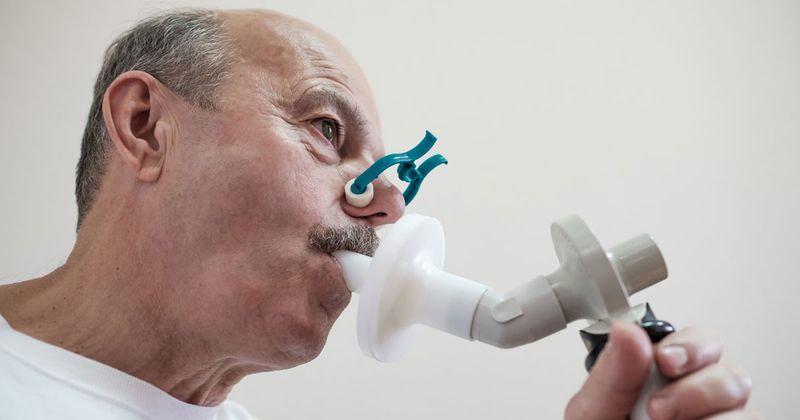Oscillometry-defined small airway dysfunction outcomes improve with dupilumab
Key takeaways:
- Improvements were seen after a median of 4.5 months.
- FEV1 improved by a mean of 406 mL.
- Improvements in Asthma Control Questionnaire scores surpassed the minimal clinically important difference.
Dupilumab improved outcomes among patients with severe asthma and concomitant oscillometry-defined small airway dysfunction, according to a letter published in Annals of Allergy, Asthma & Immunology.
This real-life study may be the first to examine the effect of dupilumab (Dupixent; Regeneron Pharmaceuticals, Sanofi) on patients with uncontrolled severe asthma selected based on their oscillometry-defined small airway dysfunction (SAD), wrote Brian Lipworth, MD, head of the Scottish Centre for Respiratory Research and professor of allergy and pulmonology at University of Dundee, and Rory Chan, MBChB, PhD, clinical research fellow at the university.

The study involved 16 patients (mean age, 58 years; 10 women) with severe asthma and concomitant SAD, diagnosed as frequency-dependent resistance heterogeneity between 5 Hz and 20 Hz (R5-R20) of 0.1 kPa/L/s or more and an area under the reactance curve (AX) of 1 kPa/L or greater at baseline.
Fifteen of the patients received a 600 mg loading dosage and then 300 mg every 2 weeks, and the sixteenth patient received a 400 mg loading dosage with 200 mg every 2 weeks. The mean duration between initiation of treatment and post-biologic pulmonary function testing was 4.5 months.
Median values for R5-R20 and AX significantly improved after dupilumab therapy, the researchers found, as did median values for reactance at 5 Hz and resonant frequency. Asthma Control Questionnaire (ACQ) scores and fractional exhaled nitric oxide (FeNO) values also significantly fell, the researchers continued.
Improvements in FEV1 percentage, forced expiratory flow between 25% and 75% of forced vital capacity (FEF25-75), forced vital capacity percentage (FVC%) and FEV1/FVC were significant as well, the researchers said, although there were no median differences in peripheral blood eosinophil counts.
Twelve of the 16 patients experienced improvements in oscillometry values that exceeded a biologic variability value of 0.04 kPa/L/s in R5-R20. Also, 12 experienced improvements in oscillometry values exceeding a biologic variability value of 0.39 kPa/L in AX.
These absolute median improvements exceeded previously established biologic variability values, the researchers said, indicating clinically relevant treatment effects.
Similarly, 13 experienced improvements in FEV1 exceeding a biologic variability of 150 mL. Ten experienced improvements in FEF25-75 exceeding a biologic variability of 0.21 L/s. Also, 10 experienced improvements in FVC exceeding biologic variability of 150 mL.
Absolute mean improvements included 406 mL for FEV1, 0.487 L/s for FEF25-75 and 301 mL for FVC.
Additionally, 12 of the patients experienced improvements in ACQ scores that were greater than 0.5, which the researchers called the minimal clinically important difference. These improvements also surpassed the traditionally accepted minimally clinically important difference by more than a factor of three.
Based on these findings, the researchers concluded that dupilumab improves oscillometry-defined SAD outcomes, as well as spirometry, FeNO levels and asthma control, in a real-life setting. They also called for studies that use oscillometry-defined SAD as a primary outcome.
